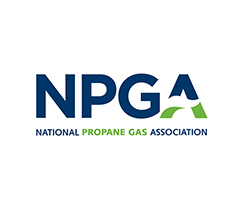Propylene demands boost global needs for propane
The need for on-purpose propylene production is expected to continue to escalate across the world, according to IHS Markit.
“The market is hungry for adequate sources of propylene supply and is investing in technologies that will deliver that supply,” says Don Bari, vice president of IHS Markit.
In 2016, the world needed about 120 million metric tons of propylene. By 2021, the world will need about 143 million metric tons of propylene. Bari estimates demand for propylene will increase about 3.5 percent per year through 2021.
IHS released a report titled, “Competitive Processes and Cost Tracker (CPCT) – On-Purpose Propylene Production,” which assesses the technical and economic merits and challenges of on-purpose technologies for propylene processes. It examines six on-purpose propylene production technologies that are gaining traction in the commercial marketplace, according to IHS Markit. Those six technologies include propane dehydrogenation; coal-to-olefins and coal-to-propylene; methanol-to-olefins and methanol-to-propylene; gas-to-olefins; metathesis; and high-severity fluidized catalytic cracking. Each of these processes uses a different feedstock and has advantages and challenges that differentiate them.
Although ethane feedstocks provide significant cost advantages for producers with U.S. plants, the cost advantages are not without tradeoffs for the petrochemical and polymers industries as a whole. For example, the ability to maintain an adequate supply of propylene has been one of those tradeoffs.
“Fortunately, the industry is very technologically driven,” Bari says. “We’re problem-solvers by nature, so companies are willing to invest in new and emerging technologies to find viable solutions.”
Of the new technologies offered, propane dehydrogenation units dominate the global market with 40 percent of the global on-purpose propylene capacity today, Bari says. Stakeholders for those facilities expect they will remain competitive due to attractive propane feedstock costs and abundant supply from the United States.
“This technology is the No. 1 on-purpose technology,” he says. “With propane lower in price, it does make it competitive. It’s the most competitive feedstock.”
With regard to propane’s use for on-purpose propylene production, Bari estimates demand will also continue to increase across the world through 2021. In 2016, the world demanded about 10.4 million metric tons of propane for on-purpose propylene production. In 2021, the world will need about 17.9 million metric tons of propane for on-purpose propylene production.
“This demand will be competition for propane’s use as a fuel,” Bari adds. “On the other hand, as a producer, this is a good problem to have. It may push prices up because of demand.”
However, some challenges exist when companies invest in new technologies such as propane dehydrogenation units. These units are multi-billion dollar investments that must be sustainable for a 30-year period, according to Bari.
“During that time, market conditions, feedstock prices and availability will vary, often significantly,” he adds. “Companies really want to be able to interrogate the cost data against a host of variables over time to minimize investment risk.”
Overall, the demand for propane for use in on-purpose propylene production will continue to rise in the future due to shale gas trends in the U.S. According to IHS, there will be needs for propylene to come from alternative sources such as propane, coal or methanol. In addition, technologies for on-purpose propylene production will continue to improve with time.
















